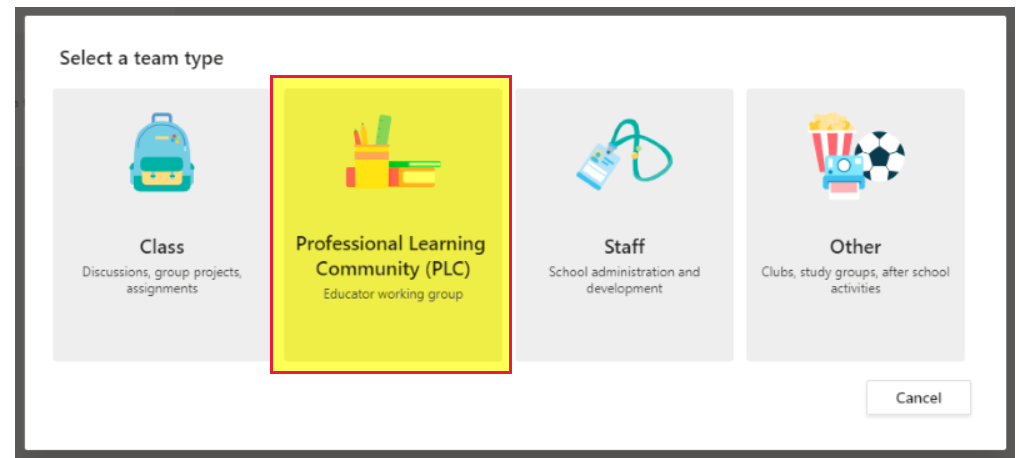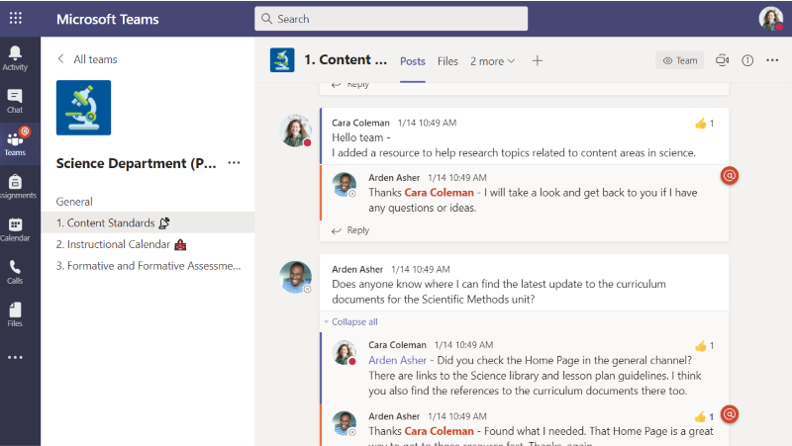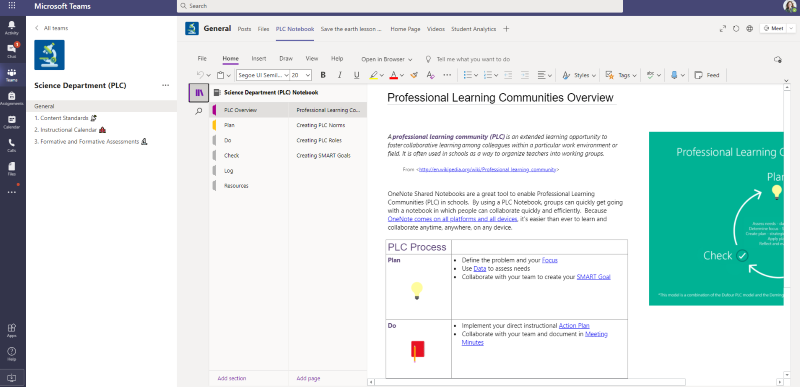Enable dynamic and organic collaboration with PLC teams
"A professional learning community isn't simply a meeting: It's an ongoing process in which educators work collaboratively in recursive cycles of collective inquiry and action research in order to achieve better results for the students they serve." (Dufour & Reeves, 2015)
What is a PLC?
From the work of John Hattie and others, we know that "collective teacher efficacy is greater than three times more powerful and predictive of student achievement than socioeconomic status" (The power of collective efficacy. While technology itself can't be considered a replacement for effective leadership, just as it can't replace effective teaching, the tools school leaders use can have many positive impacts on teaching and learning. In fact, information and communications technology is noted to have an effect size of 0.51. This effect size falls in the category of having the potential to accelerate achievement in Arran Hamilton and John Hattie's recent report, Not all that glitters is gold (2021).
Understanding the technology and how to employ it to enable dynamic and organic collaboration among educators encourages individuals to work smarter, not harder. Working smarter allows individuals to spend more time and energy on the things that matter. Hattie's work in Visible Learning also tells us that feedback is "one of the higher-performing interventions in unlocking student achievement" (Hamilton & Hattie, 2021). Hattie explains ideas for incorporating feedback by outlining a strategy called "micro-teaching" where educators reflect on recordings of their own lessons and receive feedback from others. Microsoft Teams used with other Microsoft 365 applications such as Stream, or OneNote serve as the platform to enable this collaboration.
When school leaders actively cultivate, support, and develop other leaders in their organization while incorporating appropriate collaboration-enhancing technology, they grow the shared belief that teachers create change. Educators are empowered to persevere, even when faced with difficult challenges, when this belief is part of school culture. Enabling your staff to collaborate via PLC teams is a way leaders encourage increased autonomy and agency among educators.
Benefits of using PLC teams
- PLC teams offer increased teacher autonomy in comparison to a Staff team.
- In a PLC team, channels can be more specific, granular, or structured around pedagogical strategies or specific practices. This practice provides users with more places to work and house information.
- When meetings are started/scheduled in channels, all the members of the team are notified. That means with larger Staff teams, the whole staff is notified if anyone schedules and starts a channel meeting. In a smaller PLC team, only the members of the PLC team are notified. Using PLC teams can help reduce the "notification noise" for users.
- Use the OneNote PLC Notebook with built-in templates for professional inquiry and development.
- Add tabs such as Planner to create task organization and management within smaller teams of educators that work together regularly.
Create PLC teams for grade levels and/or departments to enhance team collaboration
The ability to create PLC teams with built-in template material allows school leaders to enable groups of teachers to collaborate in a face-to-face, hybrid, or remote setting. Teams channels allow for consistent, organized communication that supports collective inquiry and continuous improvement. These channels, along with the built-in PLC Notebook, support teachers during planning sessions, data analysis, and daily collaboration.

PLC team
This screenshot illustrates team members collaborating and communicating in their PLC Team.

PLC Notebook
This PLC Notebook with prefilled content comes built in to every PLC team.

Additional supports
Video: How to setup and use PLC teams